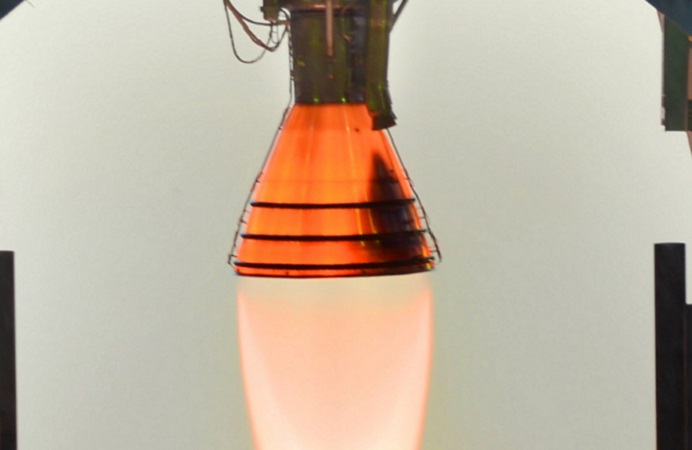Yesterday, India’s space agency the Indian Space Research Organisation (ISRO) announced it has successfully completed a ground test to qualify a high thrust version of its Vikas Engine, which is used on all of ISRO’s launch vehicles.
The test yesterday took place at the ISRO Propulsion Complex (IPRC), Mahendragiri, Tamilnadu, and proved the engine capable of a 195-second burn time. This has qualified the new engine to be used on ISRO’s newest rocket, the Geosynchronous Satellite Launch Vehicle Mark III (GSLV Mk-III), whose second developmental flight will take place this year.
Vikas, a family of liquid-fuel engines, was developed by ISRO in the 1970s. Since then, it has seen five variants – Vikas-2, Vikas-2B, Vikas-X, Vikas-4, and Vikas-4B. The current iteration, Vikas-4B, is being used on the second stage of the Polar Satellite Launch Vehicle (PSLV), the second stage and four strap-on boosters of the GSLV Mk-II, and on the twin engine core liquid stage (L110) of the GSLV Mk-III.
The upgraded High Thrust Vikas Engine was flight-tested in March this year, on a GSLV Mk-II, which is the predecessor of the GSLV Mk-III with a vastly different design. During the launch, the engine fired for 132 seconds, with a thrust of 846kN – up by 6% from the original Vikas-4B design.
The GSLV Mk-III using the High Thrust Vikas Engine will probably be launched around September-October this year, carrying ISRO’s geostationary communications satellite GSAT-29 into Geostationary Transfer Orbit (GTO). This will be the second flight of the GSLV Mk-III, whose maiden launch took place on 5 June last year, orbiting GSAT-19. The rocket, which is ISRO’s heaviest to date and which utilizes an indigenous cryogenic engine, will finally give ISRO the capability to launch heavier satellites into GTO. The GSLV Mk-III is also said to be the vehicle ISRO will use for future crewed missions in its ongoing human spaceflight programme, for which the agency successfully tested a crew escape system last week.







